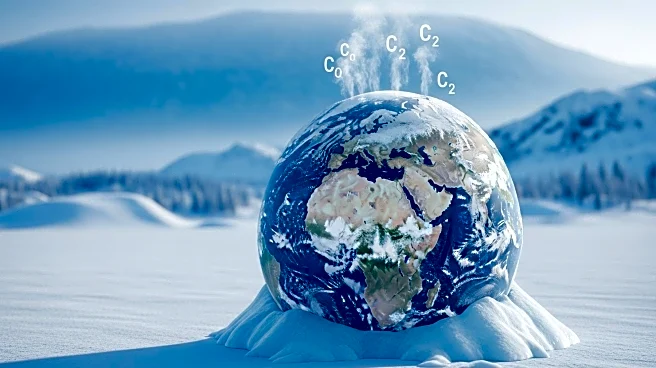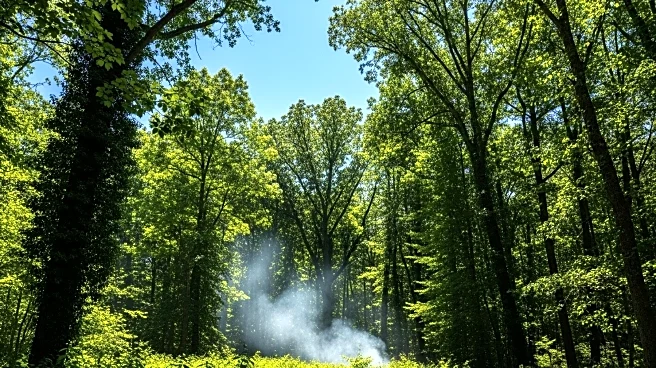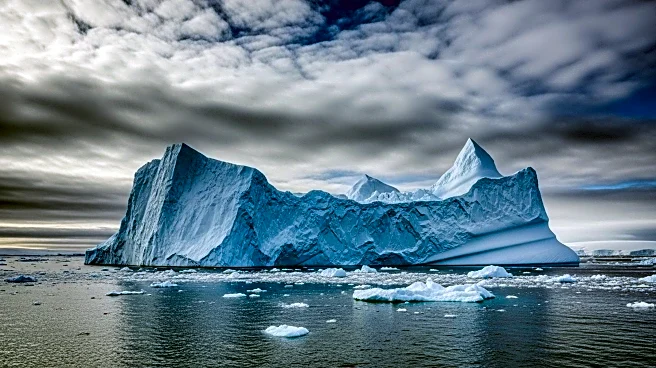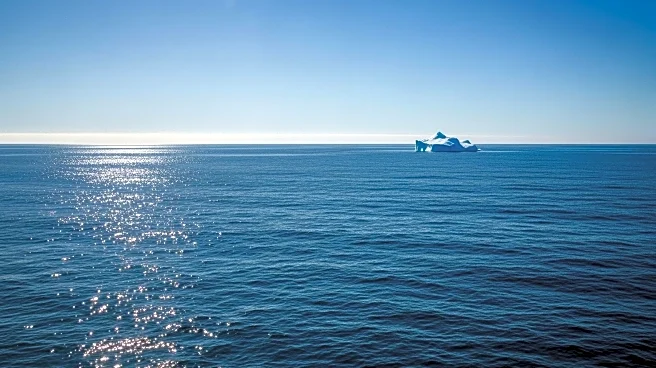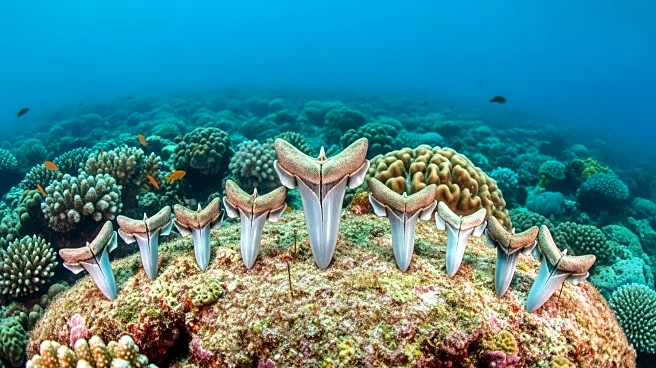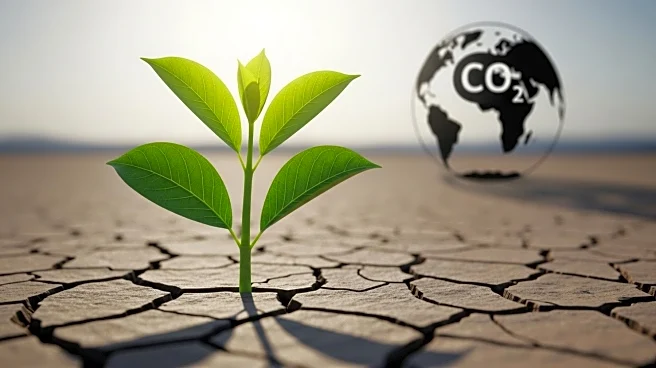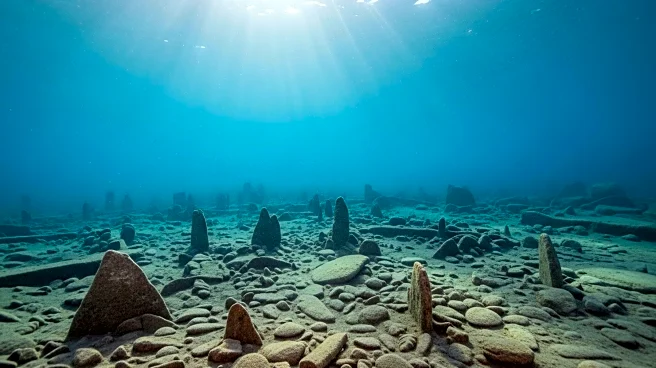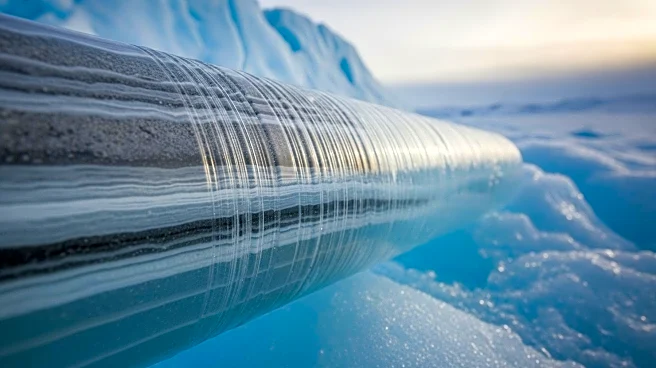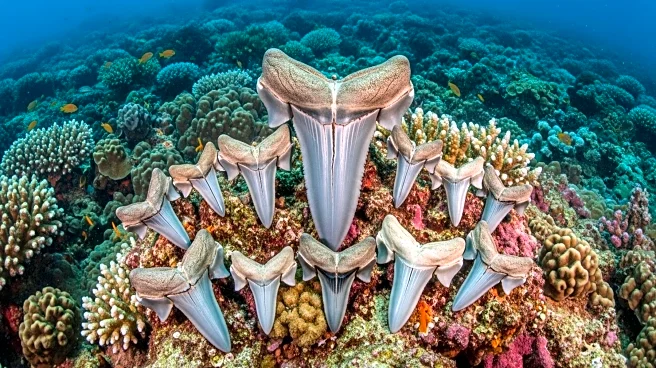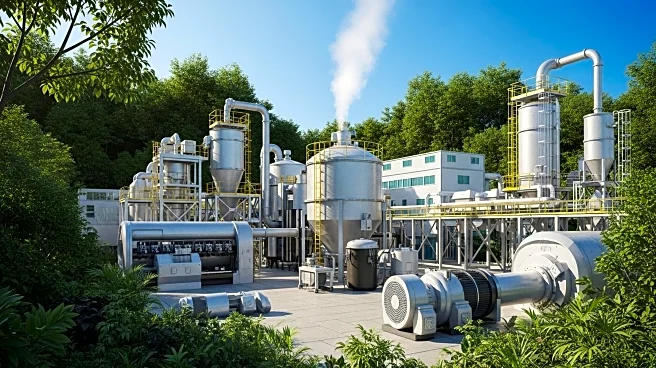What's Happening?
A recent study conducted by researchers at the University of Gothenburg has uncovered that thawing permafrost significantly contributed to carbon dioxide emissions following the last ice age. Historically, shifts between ice ages and interglacial periods influenced atmospheric CO2 levels, with warmer oceans releasing stored carbon. However, the new research indicates that thawing permafrost may have been responsible for nearly half of the CO2 increase during the interglacial period. The study utilized pollen analyses and climate data to estimate historical vegetation types and carbon storage, revealing that large amounts of carbon were trapped in permafrost during the Ice Age. As temperatures rose between 17,000 and 11,000 years ago, permafrost thawed, releasing CO2 into the atmosphere. Despite this natural variation, human activities over the past 250 years have disrupted the carbon cycle, leading to unprecedented CO2 levels.
Why It's Important?
The findings of this study are crucial for understanding the historical carbon cycle and its implications for current climate change. The research highlights the significant role of permafrost in past CO2 emissions, offering insights into how natural processes have historically balanced carbon levels. However, the current disruption caused by human activities, such as fossil fuel combustion, has led to CO2 levels rising from 280 ppm during the Industrial Revolution to 420 ppm today. This poses challenges for future carbon storage, as rising sea levels reduce available land. Understanding these dynamics is vital for developing strategies to mitigate climate change impacts and manage carbon emissions effectively.
What's Next?
The study suggests that future carbon management will be challenging due to reduced land availability from sea level rise. Researchers emphasize the need for innovative solutions to store carbon as permafrost continues to thaw. This may involve enhancing carbon uptake in peatlands or exploring new methods for carbon sequestration. Policymakers and environmental scientists must collaborate to address these challenges and develop sustainable practices to manage carbon emissions and mitigate climate change effects.
Beyond the Headlines
The study raises ethical and environmental considerations regarding human impact on natural carbon cycles. It underscores the importance of balancing economic development with environmental sustainability. As permafrost thaws, there is a risk of releasing ancient carbon stores, which could exacerbate climate change. This highlights the need for responsible environmental stewardship and the development of policies that prioritize long-term ecological health over short-term economic gains.
